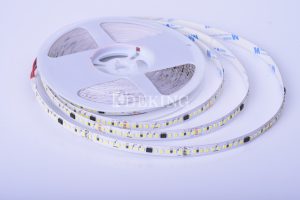What is Transparency in Manufacturing?
Sure, whether these materials with real transparency come form manufacturers of LED strip lights are to be published properly it is important for a number of interested parties: consumers, environmentalists and regulatory bodies. Transparency affects not only consumer trust, but environmental sustainability and global safety standards as well.
Material Disclosure Analysis in Detail
Materials Transparency: There is dramatic variation among LED strip lights manufacturers in their approach to material disclosure. Typically the bigger companies are more transparent, since they have to follow stricter regulations and there is a lot of public focus on them. For example, major brands are known to publish extensive reports articulating the materials they used and where these materials come from as well as their environmental cost. These reports might, for example state that an average LED strip is made up of 20% aluminum, copper and silicone while the rest are different types of plastics with their exact percentage such ventilated noisy.
On the other hand, a smaller manufacturer may provide less detail and prefer to keep some information confidential claiming protection of trade secrets or lack of robust regulatory reasons. In 2022, researchers found that only about 40 percent of public disclosures from small and mid-sized enterprises contained the required material information.
The effects of not disclosing by the stakeholders
This lack of transparency has a dramatic impact on key stakeholders:
Consumer unable to make decision about eco-friendliness and safety of products
Regulatory bodies struggle to enforce environmental and safety standards
This makes it tough for environmental groups to track the real-world footprint of these items.
Industry Guidelines/Regulation
Transparency amongst the highest in countries with high-level manufacturing and environmental regulations (USA & EU). These have accompanying standards which prescribe corporations to reveal harmful substances that they use in their products. For instance the EU Reach regulation which requires full disclosure on chemicals in manufacture.

Steps to Improve Transparency
Transparency can be improved by implementing following strategies:
Harmonisation of international regulations: Encouraging the adherence to international standards could flatten the inequality between manufacturers.
Improved regulatory frameworks: More regulation may result in more strict requirements to disclose all material information.
This includes consumer awareness campaigns - to increase demand our marketing on material transparency imperative and midpoint of where the market should go.
Consumers expect something from technology, and market trends
Consumer expectations are changing and the desire for transparency is on the rise, driving demand as well in part due to increased consumer education but also fashionable sustainability. Consumers are increasingly making purchasing decisions based on the impact their products have, which puts more pressure on manufacturers to disclose what materials they actually use.
This topic, i. e., the transparency of led strip lights manufacturer in relation to material usage is a multifaceted one and depends on different aspects such as market size, regulatory setting or even consumer demands etc A growing number of manufacturers, particularly the larger companies in this sector, are moving toward increasing transparency but there is still much to be accomplished before all manufacturing entities communicate effectively and entirely with interested parties.